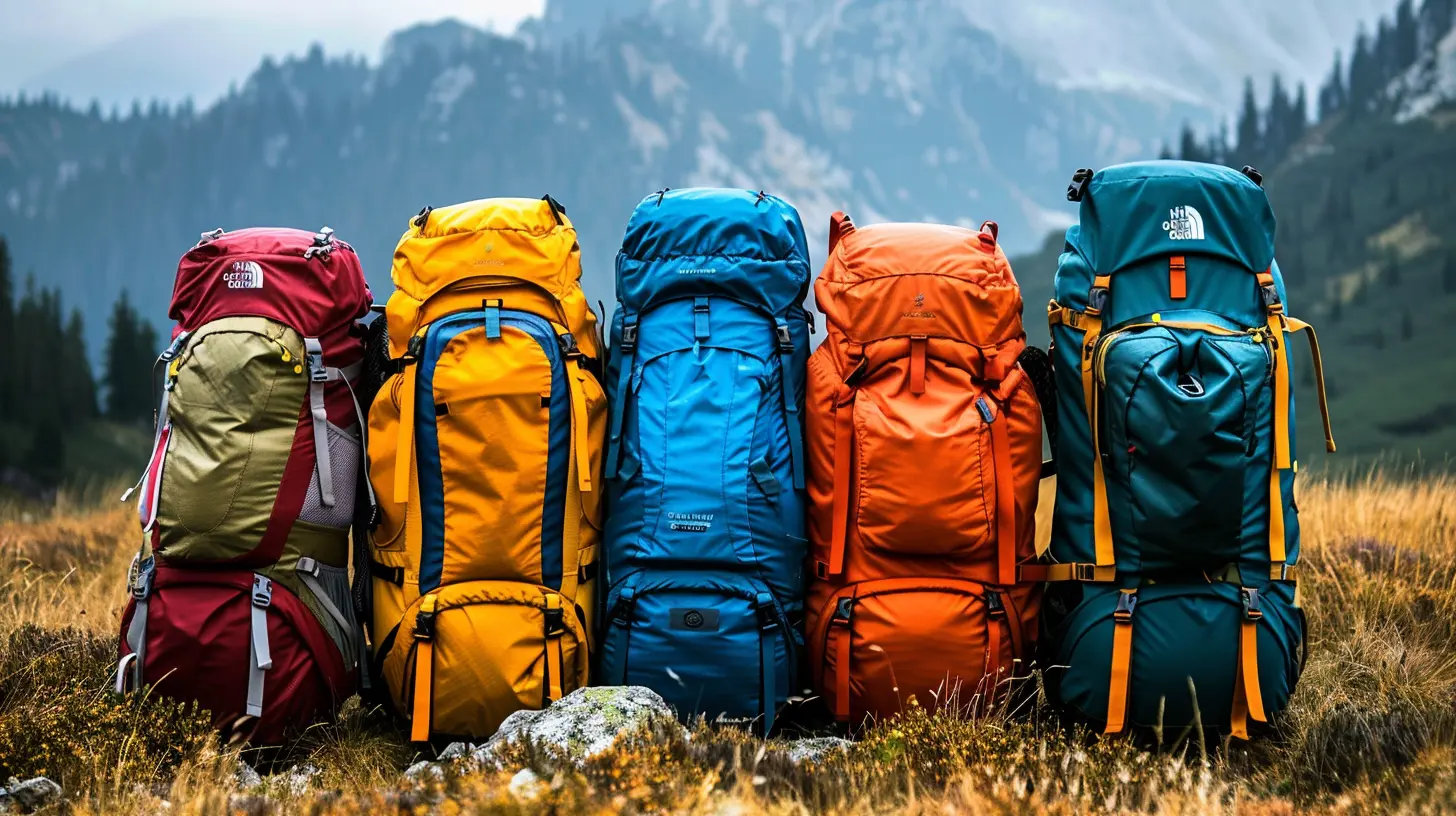Preparing for High-Altitude Backpacking: Gear and Safety Tips
27 October 2025
Backpacking in high-altitude environments is an incredible experience, but it also comes with challenges that require preparation. Unlike hiking at lower elevations, trekking in the mountains demands a thoughtful approach to gear, safety, and acclimatization. Whether you're planning a trip to the Rockies, the Andes, or the Himalayas, knowing what to expect can make all the difference between an unforgettable adventure and a dangerous ordeal.
So, how do you get ready for high-altitude backpacking? Let’s break it down step by step! 
Understanding High-Altitude Backpacking
Before we dive into gear and safety tips, let’s talk about what qualifies as “high-altitude” backpacking. Generally, any elevation above 8,000 feet (2,400 meters) is considered high altitude, while above 12,000 feet (3,600 meters) is considered very high altitude. The higher you go, the thinner the air, making it harder for your body to get the oxygen it needs.At extreme elevations, hikers may experience altitude sickness, fatigue, and dehydration—none of which are fun when you're miles from civilization. But don’t worry! With proper preparation, you can tackle high-altitude trekking safely and enjoy the breathtaking views without feeling like you’re gasping for air. 
Essential Gear for High-Altitude Backpacking
Your gear can make or break your high-altitude hiking experience. Packing smart ensures that you stay warm, dry, and energized throughout your journey.1. Proper Backpack and Packing Strategy
A well-fitted backpack (50-70L) is essential for carrying your gear efficiently. Make sure it has a sturdy hip belt to distribute weight evenly, reducing strain on your shoulders.Packing Tips:
- Keep heavier items close to your back for better balance.- Store essentials like snacks, navigation tools, and water in easily accessible pockets.
- Use dry bags or a rain cover to keep your gear waterproof.
2. Layered Clothing System
High altitudes mean unpredictable weather—sunny and warm one moment, freezing cold the next. A good layering system keeps you comfortable in any condition.Three Essential Layers:
1. Base Layer (Moisture-Wicking): Avoid cotton; opt for merino wool or synthetic fabrics to keep sweat away from your body.2. Insulating Layer (Warmth): A down or fleece jacket retains heat in cold conditions.
3. Outer Layer (Wind and Waterproof): A breathable but waterproof jacket (like Gore-Tex) protects against wind and rain.
Don’t forget gloves, a hat, and thermal socks—your extremities are the first to suffer in cold weather!
3. High-Quality Footwear
Trekking at high altitudes means dealing with rocky, uneven terrain. A good pair of ankle-supporting hiking boots can prevent sprains and foot fatigue.Shoe Checklist:
✅ Proper fit (snug but not tight)✅ Waterproof and breathable material
✅ Well-broken-in before the trip (never wear brand-new boots!)
Pair your boots with moisture-wicking socks to prevent blisters—it’s a small detail that can save you a lot of pain!
4. Sleeping Bag and Shelter
When camping in the mountains, temperatures can plummet at night. A four-season sleeping bag rated for below-freezing temperatures is a must.Additional Shelter Gear:
- A lightweight, weatherproof tent with good ventilation- Sleeping pad for insulation and comfort
- Compression sack to save space in your backpack
5. Hydration System and Water Purification
Dehydration hits harder at high altitudes. Bring a hydration bladder (2-3L) for easy access to water while hiking.Since you may not find clean water, pack a water filter, purification tablets, or a UV purifier to treat water from streams and lakes.
Fun fact: Thirst isn't always a good indicator at high altitudes, so make it a habit to drink even when you're not feeling thirsty!
6. Nutrition and High-Energy Foods
Your body burns more calories at high elevations, so fueling up is crucial. Stick to lightweight, nutrient-dense foods like:🥜 Nuts, seeds, and trail mix
🍫 Energy bars and chocolate
🥩 Jerky or dehydrated meats
🍝 Instant meals (freeze-dried food)
Aim to eat small meals frequently to maintain your energy levels! 
Safety Tips for High-Altitude Backpacking
Even with all the right gear, proper preparation is key to staying safe in high-altitude environments.1. Acclimatize Properly
The biggest mistake hikers make? Ascending too quickly. Give your body time to adjust to lower oxygen levels by spending a day or two at moderate elevations before heading higher.Acclimatization Tips:
- Follow the “climb high, sleep low” rule (hike to a higher altitude during the day but sleep at a lower elevation).- Increase elevation gradually (no more than 1,000 feet per day once above 8,000 feet).
- Take rest days if needed—listen to your body!
2. Recognize Altitude Sickness Symptoms
Altitude sickness can affect anyone, regardless of fitness level. Watch out for these symptoms:⚠️ Mild Symptoms (Acute Mountain Sickness - AMS):
- Headache
- Dizziness
- Nausea
- Fatigue
⚠️ Severe Symptoms (HAPE/HACE - Life-Threatening!):
- Confusion or disorientation
- Difficulty breathing, even at rest
- Loss of coordination
If symptoms worsen, descend immediately—don’t wait!
3. Monitor Weather Conditions
Mountain weather changes in an instant. A sunny morning can turn into a freezing thunderstorm by afternoon.Before your hike, check:
🛰️ Satellite weather forecasts
❄️ Avalanche warnings (if applicable)
🌪️ Wind speed and storm predictions
Carry a lightweight weather radio or a satellite communicator (like a Garmin InReach) for safety updates.
4. Carry a First-Aid Kit and Emergency Gear
Accidents happen, and a well-stocked first-aid kit is non-negotiable.First-Aid Essentials:
- Pain relievers (ibuprofen, aspirin)- Blister treatment (moleskin, bandages)
- Altitude sickness medication (Diamox, if prescribed)
- Antiseptic wipes and wound dressings
Also, pack these emergency must-haves:
✅ Headlamp with extra batteries
✅ Multi-tool or knife
✅ Emergency bivvy or space blanket
✅ Whistle and signal mirror
5. Hike with a Buddy or Notify Someone
Solo backpacking can be appealing, but at high altitudes, it's best to hike with a partner. If you must go alone, at least let someone know your route and expected return date. A satellite messenger can be a lifesaver when off-grid!
Final Thoughts
High-altitude backpacking is both challenging and rewarding, offering some of the planet’s most jaw-dropping landscapes. But it’s not something to take lightly. With the right gear, smart preparation, and safety awareness, you can minimize risks and make the most of your adventure.So, lace up your boots, pack smart, and embrace the challenge—because nothing beats the feeling of conquering the mountains!
all images in this post were generated using AI tools
Category:
BackpackingAuthor:

Kelly Hall
Discussion
rate this article
1 comments
Devin Mason
High-altitude backpacking? Bring your A-game and some serious gear! Leave the drama behind and pack smart—unless you thrive on altitude-induced meltdowns. Adventure awaits, but so does altitude sickness!
October 27, 2025 at 4:38 AM

Kelly Hall
Great advice! Proper gear and preparation are essential for a successful high-altitude adventure. Stay safe and enjoy the journey!


